New findings reveal future combat air programme Tempest is poised to drive productivity, innovation and skills development right across the UK
According to BAE systems, an independent report produced by professional services firm, PwC, has confirmed the economic impact of the Tempest programme will be felt in every region of the UK, supporting an average of 21,000 jobs a year, with 70% of the programme’s value generated in the North West, South West and East of England.
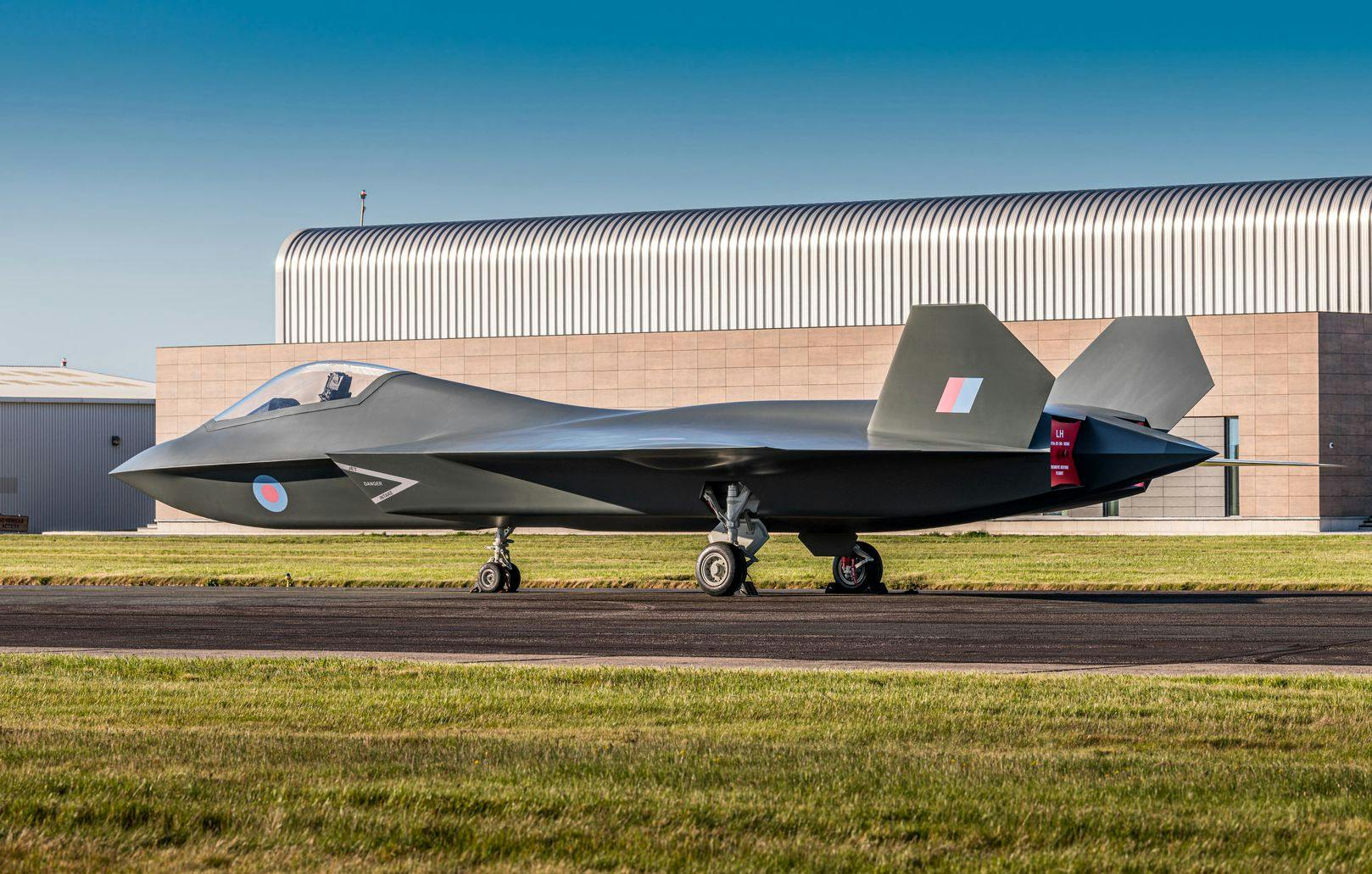
BAE Systems, on behalf of Team Tempest partners, commissioned PwC to carry out an independent analysis of the economic impact of the Tempest programme.
The full report is available here: https://baesys.resourcespace.
“The Tempest programme is expected to generate long-term high value employment, with productivity per worker 78% higher than the national average, underlining how this exciting programme can make a significant contribution to the UK Government’s levelling up priorities and the wider economy.
The programme is being delivered by Team Tempest – combining the expertise of the UK Ministry of Defence (MOD), BAE Systems, Leonardo UK, MBDA UK and Rolls-Royce. Working with international partners, the team is leading progress towards a UK-led internationally collaborative Future Combat Air System which will ensure the Royal Air Force and its allies retain world-leading, independent military capability.
Key to the success of Tempest is delivering this highly-advanced capability more rapidly and more cost effectively than ever before. Investment by industry and MOD in research and development for Tempest will generate positive spill-over benefits for the wider economy through applications of new technologies in other sectors and driving innovation in collaboration with hundreds of companies, SMEs and academic organisations.”
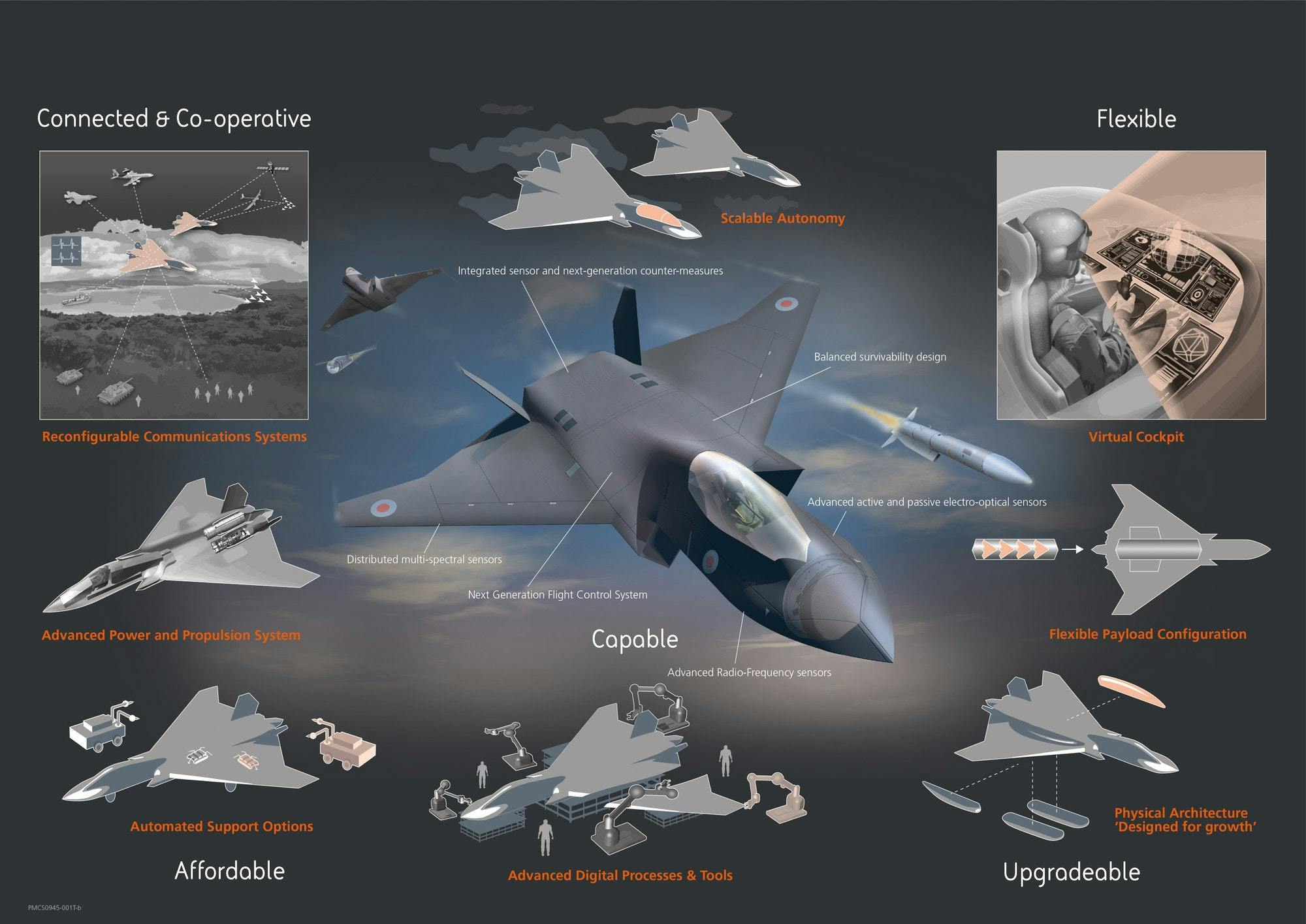
The PwC report stated that the expected impact of the Tempest programme will:
- Make an estimated £26.2bn contribution to the UK economy between 2021 and 2050*;
- Support on average 21,000 jobs per year, from development to operational service (2026-2050);
- Create high productivity employment with an average GVA per worker of £101,000, 78% higher than the UK national average and 42% higher than the country’s manufacturing average;
- Support significant benefits across regional economies.
- North West
- The programme is expected to generate at least £7.9bn GVA**;
- Will support on average 5,000 highly skilled jobs per year directly employed on the programme and in the first tier of the supply chain**;
- Productivity 31% higher than the North West manufacturing average.
- South West
- The programme is expected to generate at least £2.7bn GVA **;
- Will support on average 2,000 highly skilled jobs per year directly employed on the programme and in the first tier of the supply chain**
- Productivity 24% higher than the South West manufacturing average.
- East of England
- The programme is expected to generate at least £1bn GVA **;
- Will support on average 750 jobs highly skilled jobs per year directly employed on the programme and in the first tier of the supply chain**;
- Productivity 60% higher than the East of England manufacturing average.
Diane Shaw, EMEA Aerospace, Defence and Security Consulting Leader, PwC, commented:
“As our research outlines, the scale of the Tempest programme is significant and expected to deliver wide-ranging benefits to the UK, stimulating investment in new technologies and promoting critical skills and capabilities that ensure the UK can continue to operate at the forefront of world-leading technology. The programme will stimulate R&D in regions most in need and generate wider economic benefits for these areas, supporting the UK Government’s levelling up priorities and contributing to the UK’s economic recovery and prosperity in the decades ahead.”
UK Defence Minister Jeremy Quin added:
“By investing in the R&D to support this national endeavour to create the Future Combat Air System (FCAS) alongside our partners, we are turbocharging our combat air industry. Situated at the heart of the country’s aerospace sector, investment in FCAS reaffirms the Government’s commitment to spend more than £2bn over the next four years, with additional investment from industry, to create military capabilities that will keep us and our allies safe whilst creating thousands of skilled jobs right across the UK.”
ADS Chief Executive, Kevin Craven, said:
“The Tempest programme will bring tens of thousands of skilled jobs that will provide rewarding careers, help to level up the UK economy, and build the advanced capabilities of our world-leading combat air industry. The contribution of SMEs will be vital to Tempest’s success and I hope our network of innovative supply chain companies will explore the opportunities to be involved in the programme and maximise the benefits to our sector and our national prosperity.”
The Tempest programme is already a magnet to attract engineers and technicians and a place for young people to build their long-term careers. There are currently more than 2,000 people employed across UK industry and the MOD on the programme.
For more information on the Tempest programme:


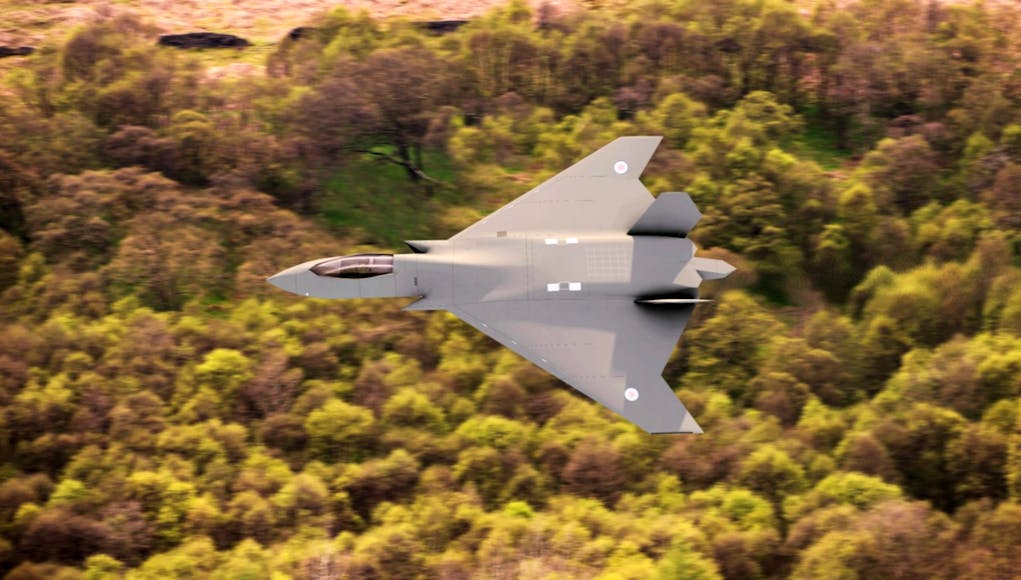

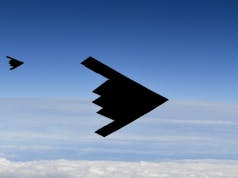
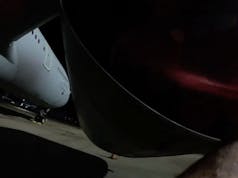

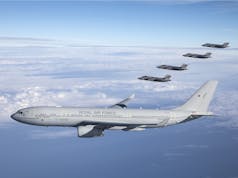

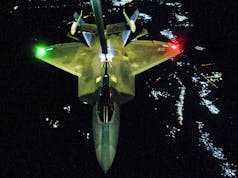


To support all these jobs you will need large RAF/ export orders. The other countries contributing to this project will not give the numbers required to make the project economic as far as l can see. I hope l am wrong, as the development keeps this this country in the front line for high tech aircraft, but it is pointless having a bit of kit which no one can afford to put into squadron service – Sorry
Working on developments of the Typhoon might be better – just look how long the F15/F16 has been in production.
I don’t think the UK can be considered a reliable partner either when it comes to actually placing orders as opposed to what was promised.
Promised is an interesting word Jack. Which promises have been broken by this government?
Hi Geoffrey, I think Jack might be referring to a UK requirement for 230 Typhoons. Later slashed to about 160 airframes. That original requirement was used to secure an excellent UK work-share.
Germany is often the target for criticism on this site, however, with recent follow-up orders – the German government will now order considerably more Typhoons than the UK.
As you say Alan the recent German order puts them a little ahead but both countries reduced their target numbers about 20 years ago.
The point I was picking up on really was this word promised that seems to get very easily confused with projected or simply would like. I would like us to order another tranche of Typhoon to allow for bolstering UK air defence but it’s never going to happen.
The UK’s commitment to the Typhoon Programme was 232 Airframes which it honoured – 160 RAF and 72 RSAF.
I understand your comment, Paul – but it’s still a bit of a sleight of hand! 😉
Let’s start with giving the NHS our EU annual subscription😀!
How do we do that then H ?
I didn’t make the promise!
Who with the authority to implement that promise, made it?
Iirc it wasn’t even a promise, simply “we could do this”.
It’s become a fake news meme used as a crutch by remainers who dont want to face that they couldnt make a winning pitch for the EU.
Define irony…
The future prime minister and the most powerful No10 advisor in history. As for being fake news, it was certainly a lie and was written on the side of a bus so large that even a right-wing Tory could see it 😁
Oh, H, you are a terrible trouble maker….😂.
Moi, John 😊
Here it is. A picture of NOT a promise but a question of how we might choose to spend taxpayers money.
https://c.files.bbci.co.uk/7BCA/production/_99609613_8e5e3cfe-4bfe-407a-85d8-4f9526cb0670.jpg
Your usual graceless self, I see.
I’m not surprised. Pedants are incredibly annoying. They do things like point out the clear difference between something that might have been mistakenly (or deliberately) inferred by the reader rather than that which was actually stated. Bloody pedants!
Enjoy….😒
Get a dictionary.
Look up the word “promise”.
Look at the bus.
Repent.
Alternatively don’t, but best get back under the bridge, after-all, the sun is out now…
You are a fool!
Hello, please keep things respectful.
The NHS needs reforming. It is a 1940s, post WW2 socialist project.
You don’t say? I seem to remember writing my master’s dissertation on the Beveridge Report! Come back when you have read something.
That’s your second response to me recently. You are a know-it-all, self opinionated little fellow.
Large orders are not likely though are they. Look at the relatively small numbers of the Raptor.
None of the founding partners are going to build really large numbers. There may be numbers for loyal wingman…
These things are not going to be cheap, and who else will want them?
Raptor was blocked for export by Congress in 1997, because of concern over leakage of technology even from close allies like Israel and Japan.
There is a really strong focus on making Tempest affordable by both the RAF and BAES, stressed at length when the program had its public launch in 2018. Also on not gold plating the aircraft and leveraging off development work already done on systems for Typhoon. Plus fast development cycle and efficient manufacturing.
Its in the interest of both parties that they execute. The RAF want to increase numbers and BAES want to stay in the UK fighter jet business and they definitely want exports.
Yes get on with it and produce a prototype with what we have then a v2 a year or two later and so on until we get production going. We keep saying digital model and testing but make something tangible and try it out. The. Have something to show more than a model. That was a good move 2 years back but need something more real to get public behind and to show to partners.
Not convinced about rushing to get the prototype out. Both Typhoon and F-35 had first flights about a decade before first operational units and clearly F-35 still hasn’t hit prime time due to software development delays.
That seems to demonstrate that its not the basic air frame that’s the critical path, its what goes in and on the aircraft and especially the software pulling it all together and controlling it in modern jets.
😄 Top comment…and sadly, very accurate!
For BAe it could work well. Get billions thrown at them for the development and then not have to deliver anything. It seems a lot of defense stuff has gone that way recently, for example the warrior program.
Well if that happens then BAES will be out of the fast jet business, as will the UK. Its unlikely either want that, but if Tempest comes in too expensive then it will happen. Hence focus by both BAES and RAF on costs.
It will no question be too expensive. No major country will join the projecy without a significant job share and without a major country joining the orders will be too small to cover R&D costs. Just look at what happened with typhoon.
So the UK, Italy and Sweden aren’t major countries in fast jet aviation? Above all Sweden with Gripen shows what can be done with focus at in excess of 260 aircraft sales. France also demonstrated something similar with Rafael.
Typhoon and F-35 are first hand examples of how not to do programs but for different reasons. The RAF and BAES have first hand experience of both. They won’t repeat it.
In a word no. Italy order will be small and Sweden developed the gripen because it couldn’t afford the typhoon, so won’t be paying for an advanced fighter. I guess it depends how capable the tempest really is going to be, if it is the budget next gen jet with the US etc developing a significantly more advanced one, then maybe.
The development costs of the f35 was insane and the past would indicate tempest will be more still as each gen of military tech works that way. It’s going to need orders in the thousands to make it cost effective.
Taking your last point first. Its precisely because of this ever increasing trend in fast jet development and manufacturing cost that the Tempest program, from the outset, is focused on breaking the trend. Its worth watching the two links below to the RAF and BAES interviews in 2018 to see the focus on this. No one is going to blindly rinse and repeat the errors of the Typhoon and F-35 programs. We are seeing this from the US T-7 Red Hawk trainer, FGAD, Tempest and French-German FCAS programs.
What is your evidence that Italian requirements will be small? Their F-35 program replaces Tornado, AMX and Harrier platforms. That still leaves them needing to replace their Typhoon fleet.
Sweden may well do its own single engine airframe, more for there own specific needs for austere ops and simple in field servicing than anything else. They haven’t decided their requirements yet. But that still leaves them as candidates for the engine, radar, sensors, avionics, defensive aids and most of the software that ties it all together, where much of a modern aircrafts costs reside.
BAES: https://www.youtube.com/watch?v=ogAtFy3q3xk
Here’s RAF: https://www.youtube.com/watch?v=utanRbCOfI8
Excellent points GHF, the T7 Red Hawk is a great example of how fast a project can move if the project is managed well and uses cutting edge prototyping and manufacturing technologies.
Obviously Tempest is a league ahead in complexity, advanced digital avionics and sensors, cutting edge airframe manufacturing and next generation military engine technology has to all come together and be sufficiently mature to go into production before this decade is out….. It’s a tall order!
It’s doable, if the will and finance is there to make it happen. By a stroke of luck, we have the cutting edge technology available in the UK in the shape of world leading military Aviation Companies.
It’s vital they keep the project management streamlined and efficient, most importantly, British led!
The Franco German, Spanish project will run into constant roadblocks, as the partnership squabbles over workshare and specifications, it’s going to run very slowly and come in way over budget!
If for any reason Tempest gets cancelled, we can expect an advanced next generation F35 derivative, with new avionics and engine to form the manned part of FOAS.
Evidence Italy requirement or at least order will be small is their mess of an economy. Ours is in a pretty rough place, but in comparison Italy is closer to where Greece was when it collapsed. Additionally my money is on Italy switching alliances and joining the European focused project headed up by France/Germany.
That’s not evidence, its opinion, but even if we take that at face value, Italy have kept investing in their armed forces, especially their Navy ever since the great recession. So while Italy’s economy may be a basket case, its really a case of when hasn’t it been?
Your money, you get to bet it, but what’s left for Italy in FCAS? And if Italy’s numbers will be low as you assert, then why would France, Germany or Spain give up any of their content?
Sweden developing the Gripen had nothing to do with whether they could afford Typhoon or not,they were never in the Market for it.Gripen was just a continuation of their policy of producing their own Fighter Aircraft.
That’s not evidence, its opinion, but even if we take that at face value, Italy have kept investing in their armed forces, especially their Navy ever since the great recession. So while Italy’s economy may be a basket case, its really a case of when hasn’t it been?
Your money, you get to bet it, but what’s left for Italy in FCAS? And if Italy’s numbers will be low as you assert, then why would France, Germany or Spain give up any of their content?
Sorry, my other reply wasn’t meant to be a response to you, the web site was throwing a fit and not taking posts and then duplicated my response to Steve.
👍
Agree, but surprised how much negativity there is here.
Tempest is clearly a generation on from Typhoon, and development being approached in a much more affordable way, so your comparison with Gripen is most apt.
I also take comfort from Sweden’s involvement, look at what they have achieved with Gripen.
Hi Jack
Gripen: To critics: a Swedish reinvention of the F-16. And perhaps not as capable.
I wonder, though, if Swedish requirements (light-weight fighter) might ultimately prove incompatible with RAF ambitions for a new heavy, complex multi-role aircraft.
I do admire Swedish efforts, however, to support an independent aircraft industry. But really, I feel Italy is the key British partner at the moment – an industrial ally for over 50 years through the successful Tornado and Typhoon projects.
Agree the Italians are good partners; pragmatic, good engineers and with few ego hang ups. The only other user of the Tornado ADV if I recall.
The RSAF were the only Export Customer for the ADV/F3,but yes the AM did have them also on Lease.
The biggest threat to Tempest is the USA. Nothing has really changed since the days of TSR2, and if our creation begins to squeeze the US equivalent, we could face uncomfortable political pressures? Not being partnered with the EU programme also makes Tempest vulnerable to US pressure, but I believe we should build this plane, regardless, to create a state of excellence within the UK, something we have lost since Duncan Sand’s ludicrous White Paper. As for Italy, it’s only worth the paper it’s written on as they will be open to the same pressures, especially from the EU once their project gets to the production phase?
I don’t see either UK or Italy bowing to US pressure or EU pressure in Italy’s case, whatever that might mean or form it might take.
The UK went down the F-35 path, being bought off by Tier 1 status and manufacturing content. But weren’t allowed to do our own software (despite Israel getting this ability) and gave up on generating any IP. RR were also excluded from the engine program. That lesson has been learnt and not likely to be repeated.
Probably fair to say Italy were extremely ticked off (being polite here) over exclusion by France and Germany from FCAS. They are unlikely to be satisfied with any crumbs left over after France, Germany and Spain have their pick of FCAS. Italy would face the same issues as the UK with the US. Might get some build contract but no IP development and an aircraft with very little if any Leonardo avionics and sensors.
Sadly, that is just what we did with TSR2, scrapped a World-class aircraft in preference for F111, which proved to be poor so bought Buccaneer instead. If the UK faces economic problems in the future, and needs US financial/political support it won’t come cheaply….it never does, and that’s the scenario where TSR2 found itself.
TSR2 was political, as this article points out aviation supports high paid jobs. TSR2 was cancelled to fund other job creation schemes.
It went because it was too good and would have been a real threat to US sales. As I said, nothing has changed politically.
Well the Wilson government campaign stated they would scrap TSR2 if they were elected as it was too costly. They also scrapped 2 other aircraft in development including the supersonic harrier. Yes the US positioned the F111 as a cheaper option but the UK never committed to buy. The US may have influenced the Wilson government by offering cheaper alternative (although F111 ended up with its own problems).so again this was on cost saving grounds. The UK had limited sales options for the TSR2 Australia had already committed to the F111 before the TSR2 was cancelled. Cabinet meeting minutes published decades later show cost cutting as the main reason.
Costs are always a burden, just look at Warrior upgrade and the Astute programme. I can’t say how but I do know from a very close player, that the prime mover to kill TSR2 was due to political pressure beyond our shores. The decision to scrap all jigs and manufacturing capability was due to this pressure. As a footnote, we would probably not have helped developed the Tornado if the TSR2 had have entered service?
The Gripen is pretty much ahead of the F16 in most respects, especially when you are comparing the Gripen E/F with the F16 E/F Block 60 aircraft. The additional weight of the Block 60 has slowed its role rate and sustained turn. In a knife fight the basic F16 A was pretty much unbeatable in close in fighting. But the USAF started adding more and more capability to the basic airframe and increasing its weight. The Gripen E/F is a new larger version of the earlier Gripen. They have increased the wing area to compensate for the additional weight and added a more powerful engine for a slightly better thrust to weight ratio. On the F16, they only increased the engine power, which eats in to the internal fuel, hence the almost standard fitment of conformal fuel tanks.
Swedens primary focus with the Gripen was a point defence fighter that can operate from austere sights. Where it can take of from short stretches of road, so it had to have excellent STOL performance. The canard delta layout helps with this a lot. The F16 at a similar max all weight has treble the take off distance.
At this point, I still believe the Tempest program will spawn two manned aircraft designs, a light weight fighter to replace the Gripen and a heavier design to replace Typhoon. There is too much of a disparity between Sweden’s requirement and that of UK/Italy. However, the research and development in aerodynamics, power plant, electrical generation, avionics and materials will spawn the skills and knowledge needed to produce a 6th generation aircraft. The current “Tempest” shown in the artwork does not lend itself to STOL performance. Unless it uses engines with a substantial power to weight ratio, 2D thrust vectoring, a blown wing and leading edge vortex controllers (ala Su57). So far the evidence does not support it.
Thanks for an excellent response, Davey – always interesting to read.
I understand Sweden still has to define its future needs, but I agree that a smaller single engine variant seems more likely for their needs. That would also include the austere ops and simple in field servicing capability. They might even decide to incorporate a marine version given their past interest in offering such a solution to Brazil and India; they’ll want a stronger undercarriage and STOL anyway for their needs.
However, they might still heavily leverage Tempest. For example, using the same new engine, perhaps built under licence, and most of the avionics, sensors, defensive aids and weapons. Especially leveraging most of the software which seems to be the greatest challenge for projects.
Could we potentially do modular approach with single engine for Swiss and multi engine for U.K. but lots of common parts? A bit like this https://aeralis.com/ – I know this More trainer ++ aircraft but who knows? Or burned too much with F35 and common components but different planes better approach?
From the information that Saab published on some future designs, they have been looking at a direct Gripen replacement, i.e. lightweight single engine aircraft, but also a a heavy weight twin engine aircraft more in keeping with the Tempest.
I would like to believe that the three Nation consortium will develop a test bed aircraft much like the BAe EAP was for Typhoon. A lot of the avionics can and probably will be tested in a Typhoon, as Gripen is quite small, especially in the nose volume.
I do see that if Sweden stay with the lightweight fighter than significant elements of the Tempest program will be part of the new aircraft.
SAAB/Sweden’s involvement is perhaps key to the success of the program. There will definitely be a need for a “cheaper” lightweight aircraft to replace Gripen in the future. One that can compete with Chinese and possible Russian aircraft in performance but more importantly cost. Not every Nation can afford or needs the latest generation aircraft. Especially when you consider how “Developing Nations” will operate and maintain them once in service. Aircraft radar absorbent materials have come a long way since the F22. But even the F35 still needs special care and handling to maintain the surface finish.
Probably using the co developed systems and engine technology, in a Swedish designed and built single engine compact airframe Alan…
The key here is to develop a high quality simple cost effective product in the quantities that are needed for the UK and it’s partners. If we get export orders all well and good.
When do we stop improving Typhoon?
Should we still be flying “improved” Spitfires?
Nimrod taught us to stop trying to produce sons of something and move on instead with a clean slate.
Couple of observations…
Article appears to be in suggesting operational capability won’t be achieved till 2050 !
26.2bn as a contribution to UK economy. Wonder what contribution will also go into say the Swedish and Italian economies and what would that all mean in terms of unit costs.
Let’s assume 200 units then UK economy receives about ukp130m per unit !
Tried downloading BAE report via the link to get to more detail but that’s proven problematic.
I think 2050 is meant to be the end of the Peak procurement period, Target operational date being 2035.I hope your right about 200 but who knows.Personally I would like to see the RAF with Tempest with remaining Lightnings going on the carriers
Yes. I think your right Geoffrey. I managed to visually review half the report via the link and it basically said the benefits reflected a post initial manufacturing batch but excluded benefits from exports. It did say the estimates of benefits were conservative…which sounds great but could also mean unit prices will be higher.
Half the report appendices cw assumptions and methodology etc werent available online.
While it’s being stated that Tempest will be land based I assume much of the technology, systems, software etc can / would migrate to whatever long term replacement follows on behind f35b for carrier based ops.
The 200 units seems a rather conservative figure to use.
If we assume the UK and Italy build similar numbers of Tempest for national forces as they did Typhoon then that would be ~260 aircraft over program life, before any exports and before any subsystems that Sweden may use, assuming the latter does their own airframe. The numbers could be higher to expand the respective air forces, but it seems more likely that would come with unmanned platforms. Note that unmanned systems from Tempest may also be in that £26.2Bn
The RAF are probably going to need this number of manned platforms because it seems likely that as Tempest ramps the F-35 fleet will fully migrate to the FAA.
It also seems reasonable to assume that Italy, Sweden and the UK could also generate export sales.
Hey GHF. The numbers in the report for the whole project are greater. The UK Combat Air Program as a whole will contribute UKP100billion to UK economy. The Tempest element of that is the UKP26Billion number. The CAP overall includes ‘other’ platforms, systems and products (I assume weapons and UAV’s etc)
On the 200 number. The frustration is the report makes available all the assumptions and benefits in detail by sector and x region but excludes the number of airframes that underpin those benefits. Im sure each of the key Partners will probably take airframes and benefits proportional to their investment. At this stage my assumption is 200 for UK as I don’t think any other governments have fully signed up to the program. Only commitment I believe is from Industrial players within Sweden and Italy.
Nonetheless…worth downloading the report. Looks like it failed to download onto my android but was able to download onto my notebook.
Hi Pete. Finally managed to download a copy from the Leonardo website but haven’t had time to read it yet.
Estimated numbers are probably a bit of a lightning rod to put in such a report. It is also complicated because benefits to the UK would include aspects such as Leonardo presumably producing the radar, some of the avionics, and possibly all of the engines in the UK for all aircraft, not just the UK’s. And if the report attempted to estimate Italian and Swedish numbers that would probably get them in trouble.
In the past I’ve modeled as high as 250 UK manned Tempest to get back to early 2000’s active RAF fleet numbers. But with the push on complementary unmanned platforms I suspect your 200 number or possibly less is more likely, unless there really is a need for the optionally manned variant as the complementary platform.
Both the Italian and Swedish governments have “signed on” but we need to be cautious making assumptions about what they’ve signed on for so far. That probably won’t be clear until 2025.
https://theaviationist.com/2021/01/05/italy-united-kingdom-and-sweden-sign-tempest-fcas-cooperation-memorandum-of-understanding/
cheers
200 seems optimistic to me. Each generation of jet we order less than the last (same for all kit). I would guess UK will order around 60-80, Italy a little less than that and Sweden a lot less. They will need some middle East customers to get to the 200.
I already provided links back to the 2018 launch for you as to why there is so much focus on cost in order to enable larger numbers. There’s no way the RAF could perform its role with just 60-80 Typhoon replacements.
It seems BAe is worried about the program being dropped. The only reason for this survey is to try and sell the politicial story for the project continuing.
No its just MIC companies doing what MIC companies do to create and/or maintain positive influence in political quarters. We just need to make sure it never gets to US levels, where programs like LCS keep having ships built, when its clear the platforms aren’t suitable.
Currently going through this months Airforces monthly and they have knocked out an article on the Airbus future jet trainer which will be purely a Spanish effort and they state that for every €100 million invested in the project it will generate between 2100 and 2500 jobs and return €36 million in taxes.
which intrigued m when I read the following from the above article regards the Tempest program which will generate:
“21000 jobs and return if I read this right £26 billion into the economy ”
so I have to ask the better informed people out there (For me everybody) what exactly are we doing different from the Spanish (Yes I know a Trainer isn’t as complex as a 6th? gen fighter aircraft. But that is still a huge disparity
There are lots of ways of knocking out these reports which are just fancy guesswork. So there is no point in trying to compare projected benefits.
If the projected benefits to the UK economy are @£26b by 2050, that gives an indication of how much is expected to be spent on development and procurement. That spending will be funded by the UK taxpayer.
The real benefits are:
* retaining a skill base that can work on later projects
* displacing what might otherwise be spending on imported alternatives.
But this is not an investment project aiming for a return on capital. That would only arise if large sales were made not funded by UK taxpayers( exports).
I wonder if the Airbus trainer aircraft would be a contender for a Hawk replacement, as no mention has been made of a future replacement .
Might be but see Aeralis
So 21k people, say average total cost of salary pension etc is 50k a year, that’s a 1Bn a year cost until 2050.
Iirc Typhoon was estimated to have cost the UK 20Bn and analysis (hah!) suggested it’d have been about the same if we’d done it alone (more thinkgs to do, but saving vast amounts of time thus cost).
Problem is programs like this are easily cancelled by future governments. A better way to handle defence would be to set long term parameters for governing body to run defence. Similar to the Bank of England and monetary policy. Having potentially large shifts in defence if new party is elected every 5 years isn’t a stable way to run defence and programs like this.
spot on
good news for all the regions of the UK and for future technology advances, hopefully this doesn’t become another TSR2
It’s good the UK is still in the game regarding crewed fighters.